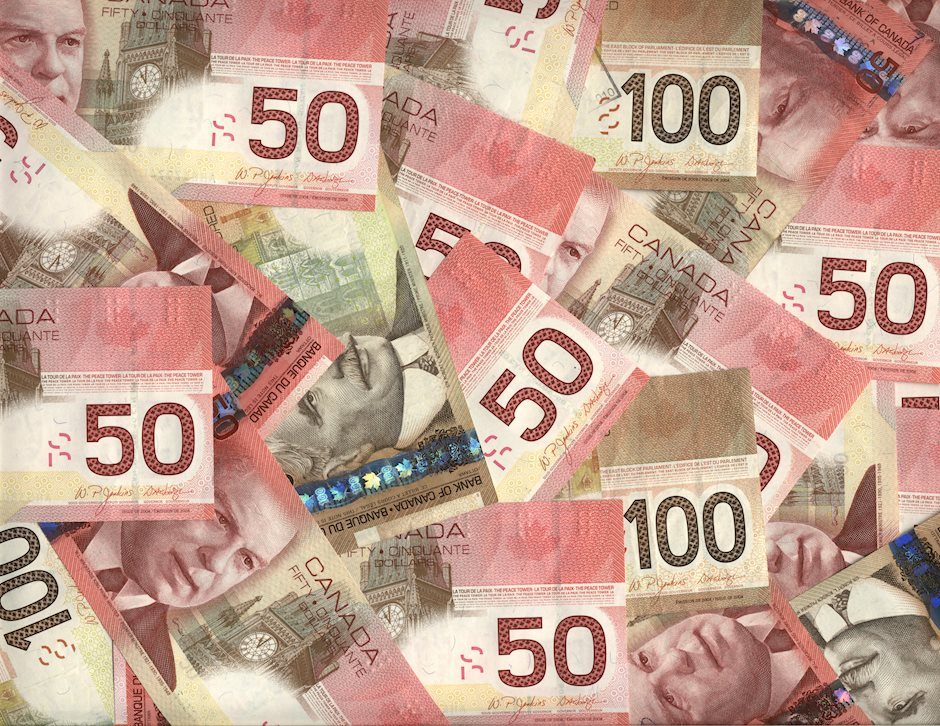USD/CAD moves away from post-BoC swing high, slides to 1.3825 on softer USD
- USD/CAD attracts some sellers on Thursday amid a modest USD pullback from a three-month high.
- Renewed buying around Oil prices underpins the Loonie and exerts additional pressure on the pair.
- The BoC’s jumbo rate cut and bets for a less aggressive Fed easing warrant some caution for bears.

The USD/CAD pair edges lower during the Asian session on Thursday and moves away from its highest level since August 5, around the 1.3860-1.3865 zone touched the previous day. Spot prices currently trade around the 1.3825 area, down nearly 0.10% for the day amid a modest US Dollar (USD) downtick, though any meaningful corrective decline still seems elusive.
The USD Index (DXY), which tracks the Greenback against a basket of currencies, eases from a nearly three-month top as bulls opt to take some profits off the table after the recent strong gains registered over the past four weeks or so. Apart from this, the emergence of fresh buying around Crude Oil prices underpins the commodity-linked Loonie and exerts some downward pressure on the USD/CAD pair.
Meanwhile, growing acceptance that the Federal Reserve (Fed) will proceed with modest rate cuts over the next year keeps the US Treasury bond yields elevated near a three-month peak. This, along with the US political uncertainty and geopolitical risks stemming from the ongoing conflicts in the Middle East, should continue to act as a tailwind for the safe-haven buck and offer some support to the USD/CAD pair.
Furthermore, the Bank of Canada's (BoC) decision to lower its key interest rate by 50 basis points (bps) for the first time since the COVID-19 pandemic and the prospects for further rate cuts should cap gains for the Canadian Dollar (CAD). This, in turn, makes it prudent to wait for strong follow-through selling before confirming that the USD/CAD pair has topped out in the near term and positioning for deeper losses.
Market participants now look forward to the release of the flash US PMI prints, which, along with the US bond yields and the broader risk sentiment, will drive the USD demand. Apart from this, Oil price dynamics should contribute to producing short-term trading opportunities. Nevertheless, the fundamental backdrop suggests that the path of least resistance for the USD/CAD pair remains to the upside.
Canadian Dollar FAQs
The key factors driving the Canadian Dollar (CAD) are the level of interest rates set by the Bank of Canada (BoC), the price of Oil, Canada’s largest export, the health of its economy, inflation and the Trade Balance, which is the difference between the value of Canada’s exports versus its imports. Other factors include market sentiment – whether investors are taking on more risky assets (risk-on) or seeking safe-havens (risk-off) – with risk-on being CAD-positive. As its largest trading partner, the health of the US economy is also a key factor influencing the Canadian Dollar.
The Bank of Canada (BoC) has a significant influence on the Canadian Dollar by setting the level of interest rates that banks can lend to one another. This influences the level of interest rates for everyone. The main goal of the BoC is to maintain inflation at 1-3% by adjusting interest rates up or down. Relatively higher interest rates tend to be positive for the CAD. The Bank of Canada can also use quantitative easing and tightening to influence credit conditions, with the former CAD-negative and the latter CAD-positive.
The price of Oil is a key factor impacting the value of the Canadian Dollar. Petroleum is Canada’s biggest export, so Oil price tends to have an immediate impact on the CAD value. Generally, if Oil price rises CAD also goes up, as aggregate demand for the currency increases. The opposite is the case if the price of Oil falls. Higher Oil prices also tend to result in a greater likelihood of a positive Trade Balance, which is also supportive of the CAD.
While inflation had always traditionally been thought of as a negative factor for a currency since it lowers the value of money, the opposite has actually been the case in modern times with the relaxation of cross-border capital controls. Higher inflation tends to lead central banks to put up interest rates which attracts more capital inflows from global investors seeking a lucrative place to keep their money. This increases demand for the local currency, which in Canada’s case is the Canadian Dollar.
Macroeconomic data releases gauge the health of the economy and can have an impact on the Canadian Dollar. Indicators such as GDP, Manufacturing and Services PMIs, employment, and consumer sentiment surveys can all influence the direction of the CAD. A strong economy is good for the Canadian Dollar. Not only does it attract more foreign investment but it may encourage the Bank of Canada to put up interest rates, leading to a stronger currency. If economic data is weak, however, the CAD is likely to fall.
Author

Haresh Menghani
FXStreet
Haresh Menghani is a detail-oriented professional with 10+ years of extensive experience in analysing the global financial markets.
















